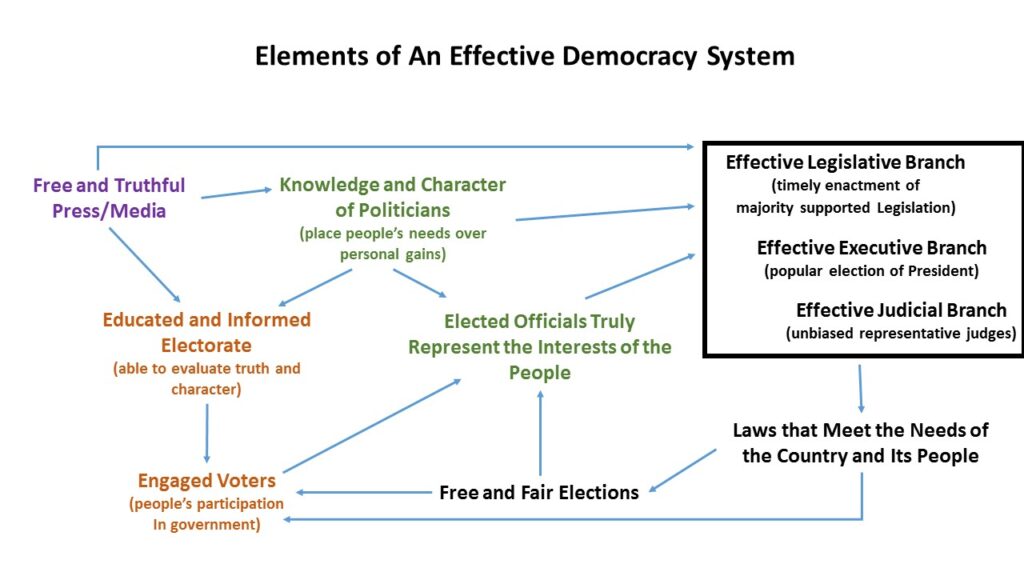
The systems chart above lists key elements needed for an effective democracy and shows how these elements influence each other.
Start on the right side of the chart with the three branches of government – Legislative, Executive and Judicial. If they are working effectively they are writing laws and allocating resources that meet the needs of the people and the country. These include laws, regulations and allocations of funds that support free and fair elections.
If done well these election laws, regulations and funds provide an environment for people to vote easily and successfully. However, that’s not the only factor that is needed to engage voters. If you move up the left side of the chart, voters need to be both educated and informed to make good choices when they vote. Our democracy system depends on various media to educate and inform our voters – media that must be free of political pressures and truthful about what is happening and what is needed. Democracy also requires knowledgeable politicians of character who place the needs of the people ahead of their own personal ambitions. These politicians need to build the trust of the people they represent. When voters are engaged, well informed, and have politicians they trust, they make good decisions about who to vote for. They elect officials that best represent their collective interests and have the strength of character to withstand political pressures from those working against those interests. When the officials we elect truly represent the needs of the people, they will do their best to make laws that meet the people’s needs.
That brings the democracy system back full circle to the branches of government making laws and allocating resources that meet the needs of the country and its people. That’s the primary goal of this democracy system. If any of these key elements breaks down, that puts the system in jeopardy.
